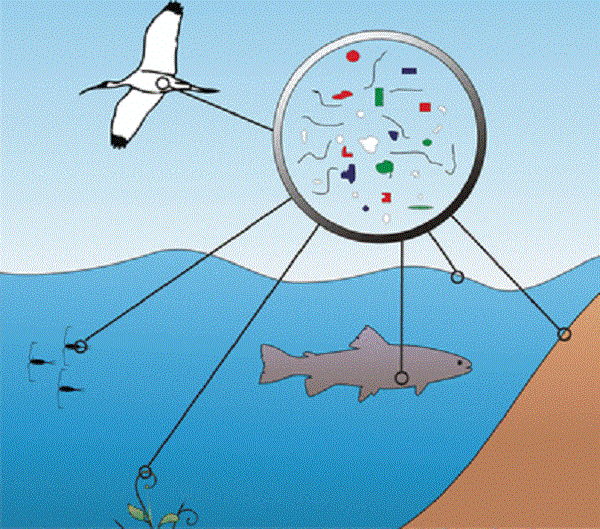Jan 6 2017
Standardized analytic protocols will help to assess the amount, quality, and risk of microplastic contaminants in aquatic ecosystems, says a review.

Since the first reports on a dramatic increase in microplastic contamination in the sea twenty years ago, research efforts have intensified worldwide. A review in the journal Angewandte Chemie has critically evaluated these studies and concludes that the analytical methods have to be harmonized to get comparable data. Further development is needed to assess particles in the lower micrometer range and below as well, as these pose the highest risks for aquatic ecosystems.
The review written by Natalia Ivleva, Alexandra Wiesheu, and Reinhard Niessner at the Technical University of Munich, Germany, starts with a remarkable observation (at least for an outsider). While marine ecosystems have been investigated extensively for around two decades and first attempts for (EU) standardization are made, results on freshwater environments are only emerging. Moreover, the obtained data for both marine and freshwater ecosystems are poorly comparable because of the very different analytical methods. However these data still point to a diverse, but no less alarming pollution situation in freshwater rivers and lakes.
The review describes the currently used analytical methods with their advantages and drawbacks. For example, the reader learns that the visual inspection of the samples (derived from sediment, water surface or bulk) still takes a prominent role although the chance of false (both positive and negative) results is very large. And the lower size limit for optical detection is recommended to be about 500 micrometers, whereas the most interesting—because probably the most harmful—microplastic particles and fibers are in the range down to one micrometer or even nanometers. On the other hand, spectroscopic techniques have been successfully implemented which can unambiguously characterize the quality of the plastic particle down to one micrometer, provided certain analytical requirements are met. The authors propose that these spectroscopic techniques, combined with the emerging thermoanalytical techniques, will provide reliable data in the future, but they need to be continually developed and optimized.
As their most important point, the authors call for a harmonization of methods. For an accurate assessment of the data, the sampling, processing, identification, and quantification of microplastic particles in aquatic environments have to be standardized, most desirably, worldwide, they say. Thus Ivleva and her co-authors present a list of nine arguments that have to be accounted for in the future if reliable conclusions on the risks of microplastics pollution can be made.
The authors also discuss the uptake of microplastics and its effects in living species, and they highlight the necessity of enhanced research efforts towards the distribution of plastic additives such as plasticizers, fillers, or flame retardants in the tissue, which are potential health hazards. Thus, the article adds important aspects to the ongoing discussion on microplastic pollution in marine and freshwater biotopes and presents valid solutions for future management.